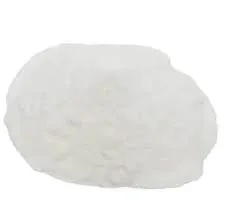
Там . 14, 2024 11:11 Back to list
Guidelines for Preparing HPMC Gel for Pharmaceutical and Cosmetic Applications in Laboratories
Preparation of HPMC Gel A Comprehensive Guide
Hydroxypropyl methylcellulose (HPMC) is a versatile, non-ionic polymer widely employed in the pharmaceutical, cosmetic, and food industries. Its ability to form gels in the presence of water makes it a valuable ingredient for various applications, from drug delivery systems to thickening agents in formulations. This article provides a step-by-step guide on preparing HPMC gel, emphasizing the importance of proper techniques to achieve desirable consistency and stability.
Materials Needed
To prepare HPMC gel, you will need the following materials
1. HPMC Powder Choose an appropriate grade of HPMC based on the desired viscosity and application. Commonly used grades have different viscosity ranges and solubility characteristics. 2. Distilled Water Provides a controlled environment free from impurities that could affect gel formation. 3. Heating Source Such as a hot plate or a microwave, for dissolving HPMC. 4. Stirring Equipment A magnetic stirrer or mechanical mixer will ensure uniform dispersion of HPMC in water. 5. pH Meter To monitor and adjust the pH if necessary, depending on the application requirements.
Step-by-Step Process
1. Determine Concentration The first step in preparing HPMC gel is to determine the concentration of HPMC needed for your specific application. Concentrations typically range from 1% to 5% (w/v). Higher concentrations yield thicker gels, while lower concentrations provide a more fluid consistency.
2. Measuring HPMC Weigh the required amount of HPMC powder accurately using a laboratory scale. This ensures precise gel formation and reproducibility.
hpmc gel preparation

3. Preparing the Water Phase Measure the appropriate volume of distilled water based on your desired concentration. It's ideal to use slightly warm water (around 40-60°C) to facilitate the dissolution of HPMC.
4. Mixing HPMC and Water Gradually sprinkle the HPMC powder into the warm water while stirring continuously. This step is crucial to prevent clumping and ensure even distribution. A magnetic stirrer is particularly effective for maintaining a consistent mixing speed.
5. Dissolution Once all the HPMC is added, continue to stir the mixture for at least 30 minutes. The heat will help accelerate the dissolution process. If necessary, you can apply gentle heating until the gel begins to thicken. It is important not to overheat the gel, as this can affect the rheological properties.
6. Cooling and Homogenization After the gel has formed, remove it from the heat source and allow it to cool to room temperature while continuing to stir. This ensures a smooth and homogeneous gel devoid of air bubbles.
7. pH Adjustment Depending on your application, you might need to adjust the pH of the gel. Most HPMC gels work well between pH 5.5 and 7.5. Use a pH meter to check, and if necessary, adjust the pH using diluted solutions of hydrochloric acid or sodium hydroxide.
8. Finalization Once the desired pH is achieved, the gel can be transferred into suitable containers for storage or use. It should be appropriately labeled with the concentration, date of preparation, and any specific handling instructions.
Conclusion
Preparing HPMC gel is a straightforward process that requires careful attention to detail to ensure optimal results. By following the steps outlined above, one can create a stable and effective gel suitable for various applications. Whether utilized in pharmaceuticals, cosmetics, or food products, HPMC gel's versatility and efficacy make it a valuable material in formulation science. With the correct preparation techniques, the potential for innovation and application is vast, opening doors to new formulations and products that meet consumer needs.
-
Unlocking the Benefits of HPMC Products: A Gateway to Versatile Applications
NewsAug.07,2025
-
Unleashing the Potential of HPMC Ashland: A Comprehensive Look
NewsAug.07,2025
-
Tile Bonding Cellulose: The Key to Superior Adhesion and Durability
NewsAug.07,2025
-
Hydroxypropyl Methylcellulose Powder: The Versatile Component in Modern Pharmaceuticals
NewsAug.07,2025
-
Hydroxyethyl Cellulose: The Versatile Solution for Various Industries
NewsAug.07,2025
-
Hydroxyethyl Cellulose (HEC): The Versatile Polymer for Various Applications
NewsAug.07,2025







